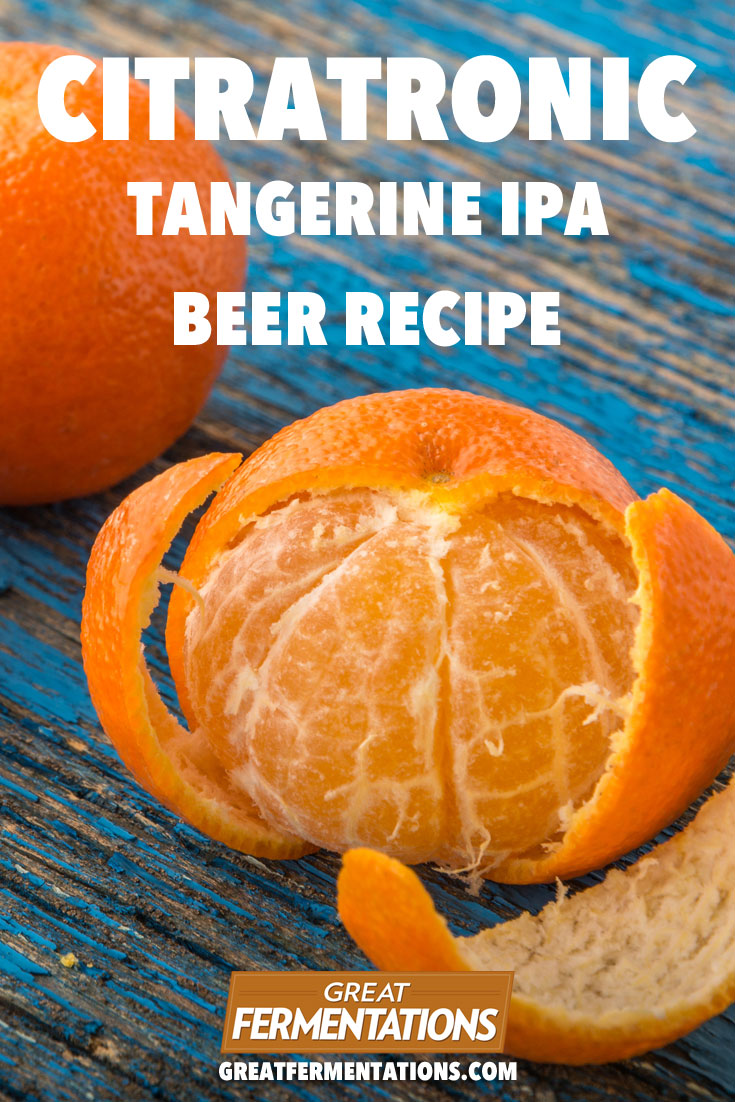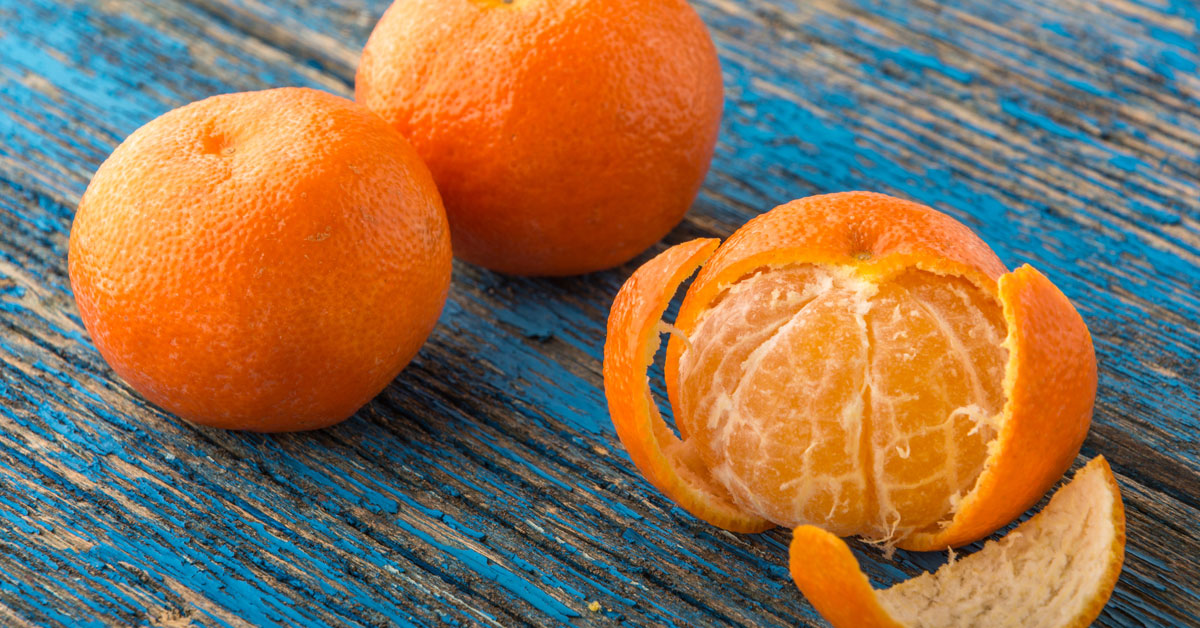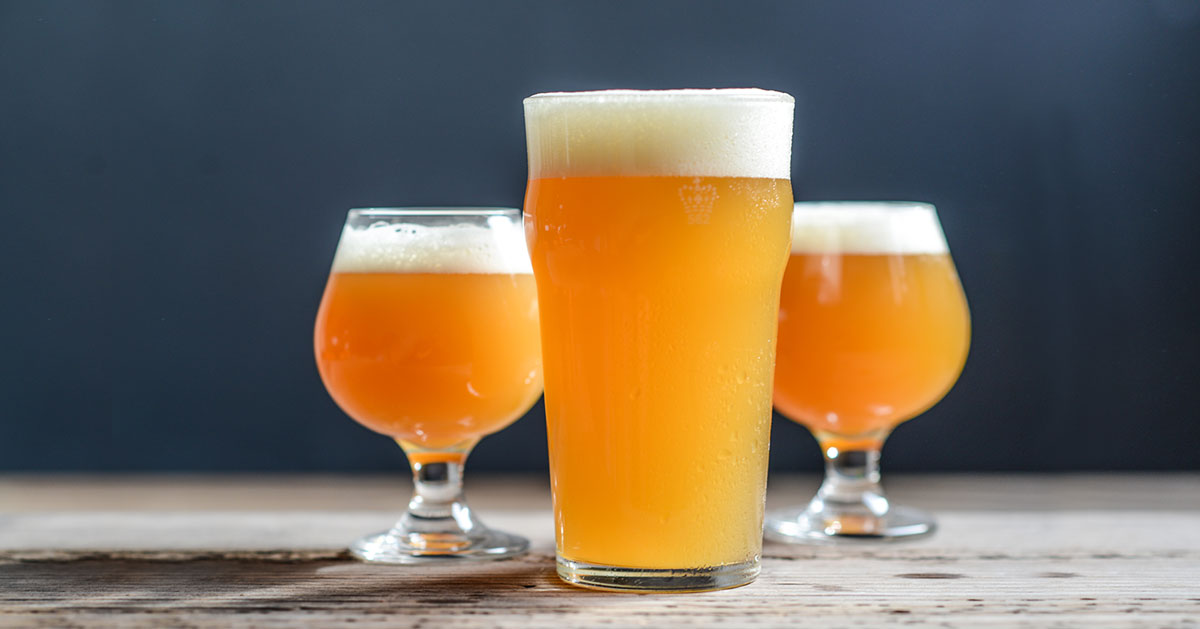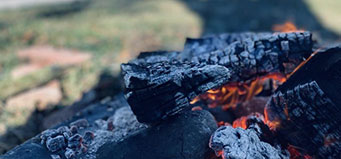Citratronic: Tangerine IPA
Hello again, and welcome to Great Fermentations’ Recipe of the Month blog! This month, we will be looking at our recipe development process and applying it to a popular commercial beer, Citradelic IPA from New Belgium; we are calling our recipe Citratronic Tangerine IPA!
Clone recipes are very popular for home brewers to brew because they already have a good reference point of what the finished beer is going to turn out like. Even if it isn’t exact, a clone recipe should make a beer that is in at least the same vein as the commercial example it is attempting. In developing clone recipes, you often have to consider beer style guidelines, ingredients and the availability of those ingredients, what ingredients are used by the commercial brewery, what you are going for in a beer recipe, and how you are going to get there. While clone recipes exist out there on the internet, they can be of dubious quality, use odd measurements that nobody would actually use (11.32 oz of a grain…really?), or make a good beer that is just so far removed from the original as to really not be a clone.
 When we develop recipes here at Great Fermentations, we do look at what others have tried when cloning commercial beers, as well as look at tried and true sources, such as the AHA’s Zymurgy magazine, as well as BYO (Brew Your Own) magazine. When it comes to making our clones, it is sometimes prudent for us to prioritize ingredients and change amounts of grains and hops to still make the best and closest possible beer to the original without using so many ingredients as to make the beer prohibitively complicated and/or expensive. In addition to this, in the interest of easy packaging, we sometimes round hop or grain amounts up or down to make even ounces or pounds, or reduce the amount of hop types in a beer. For example, in doing research for this Citradelic IPA Recipe, the brewery’s page lists a whopping ten different kinds of hops! Not only that, but we have been going through a bit of a dry spell with one of those hops, Galaxy, in particular (which will hopefully be alleviated in the coming months with the Southern hemisphere hop harvest around the corner).
When we develop recipes here at Great Fermentations, we do look at what others have tried when cloning commercial beers, as well as look at tried and true sources, such as the AHA’s Zymurgy magazine, as well as BYO (Brew Your Own) magazine. When it comes to making our clones, it is sometimes prudent for us to prioritize ingredients and change amounts of grains and hops to still make the best and closest possible beer to the original without using so many ingredients as to make the beer prohibitively complicated and/or expensive. In addition to this, in the interest of easy packaging, we sometimes round hop or grain amounts up or down to make even ounces or pounds, or reduce the amount of hop types in a beer. For example, in doing research for this Citradelic IPA Recipe, the brewery’s page lists a whopping ten different kinds of hops! Not only that, but we have been going through a bit of a dry spell with one of those hops, Galaxy, in particular (which will hopefully be alleviated in the coming months with the Southern hemisphere hop harvest around the corner).
To get around this, reduce cost on our beer, and still create a delicious beer that lives up to the commercial example, we will use five hop varieties and vary them enough, with whirlpool and dry hops, so that the same illusion of a world of hops is present in the final beer. The breweries web page gives an ABV of 6.0%, with only pale malt and caramel 120L used. Easy enough! We put these grains in Beersmith with our equipment profile and dial in the different X-factors to match the beer stats listed by the brewery. Also, we will replace the “tangerine infused orange peel” mentioned on the brewery’s website with tangerine peel.
Ready to brew this one? Let’s give it a try!
Citratronic Tangerine IPA Recipe (for final volume of 5.5 gallons)
Specs
Estimated O.G. = 1.063
Estimated F.G. = 1.0.17
Estimated ABV = 6.1%
Estimated bitterness = Around 55 IBUs
Estimated SRM: 9 – 10
Grain Bill
13 lbs. 2-Row Brewer’s Malt
0.5 lb. Crystal 120L Malt
Hops
0.5 oz Nugget pellet hops (13% AA), added at the beginning of the 60 minute boil.
1 oz tangerine peel, added with 10 minutes left in the boil.
1 oz each: Chinook, Citra, Mandarina Bavaria and Simcoe pellet hops, added at flameout during whirlpool. Alternately, you can cool the wort down to 180F before adding hops and allowing to steep for 30 minutes.
1 oz each Citra and Mandarina Bavaria, added as a dry hop. Allow 7 days contact time.
Yeast
2 packs (or make an appropriate starter) of Wyeast 1332 Northwest Ale yeast, White Labs WLP041 Pacific Ale, 1 can of Imperial Organic Yeast A15 Independence, A18 Joystick. or 1-2 packs of dry BRY-97 yeast.
Brewing Process
- Mash at 149-151F for 60 minutes. A mash-out at 168-170F for 15 minutes is recommended, but not necessary. Drain, sparge, and proceed with a 60 minute boil.
- Chill to 66-68F and pitch yeast. Ferment at 66F for two weeks. For dry hopping, you can either add dry hops directly to the primary fermenter after primary fermentation is complete, or transfer to secondary and add dry hops. Allow 1 week of contact time before bottling or kegging.
- Extract Version:Replace the 2-row brewer’s malt with 8 lbs of light dry malt extract . Steep the specialty grains (crystal 120L) at 150-155F for 30 minutes using a muslin grain bag. Remove the bag, allowing the grains to drain into the boil kettle. Turn off the flame and dissolve the extract in the kettle. Turn the flame back on, bring to a boil and proceed as above. NOTE: as the extract version is slightly different than the all-grain, you may have a slightly different starting gravity at the beginning and end of fermentation.
Cheers!
Wes



